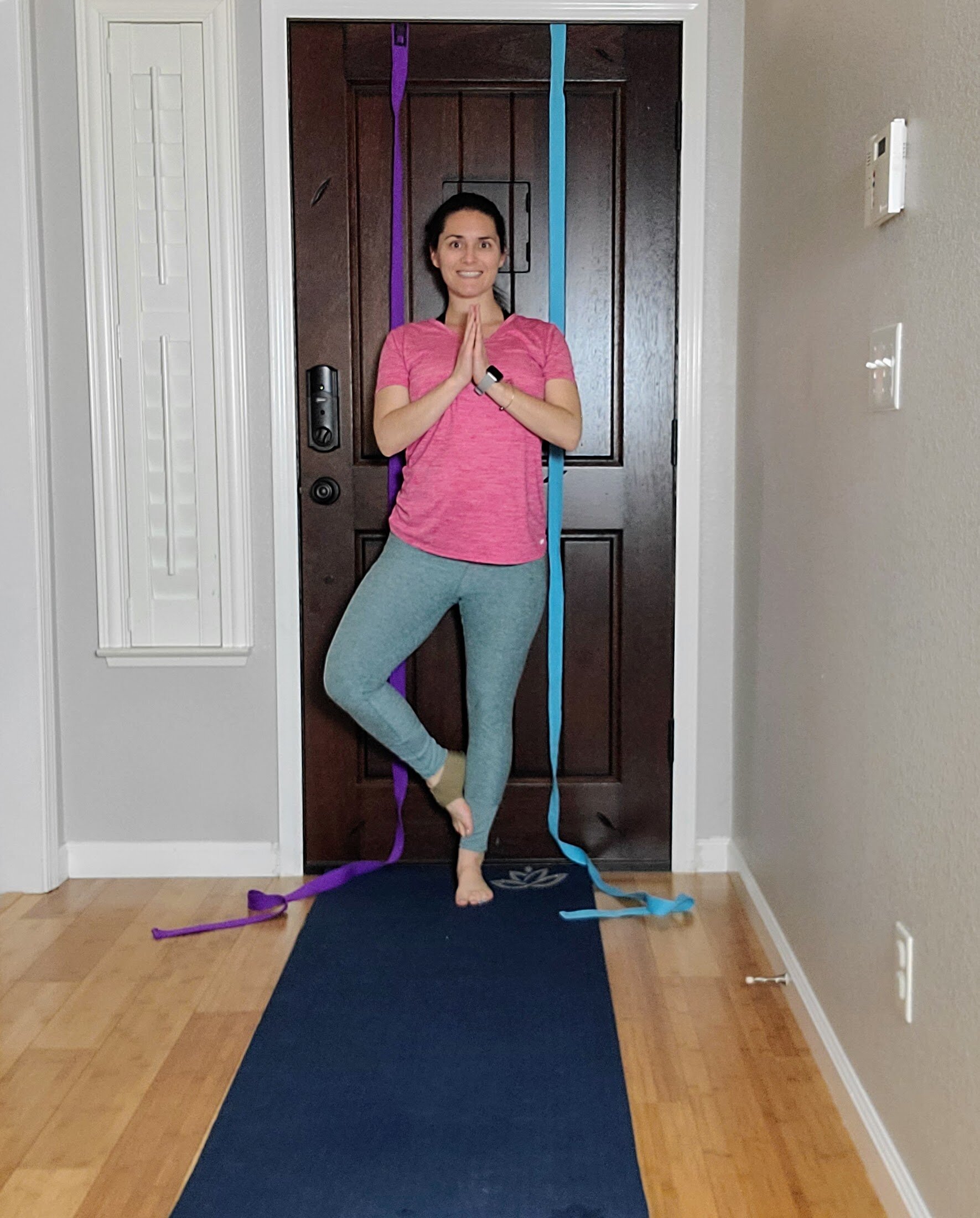Yoga Poses for Leg Length Discrepancy: Tree Pose
/Standing yoga poses can present challenges for people with leg length discrepancies. If your legs are uneven in length, standing can be uncomfortable, your hips can be misaligned, and your legs can have differences in strength or flexibility.
Such challenges, however, are exactly the reasons you need to work on standing poses. They may be uncomfortable, but trying to find more balance between your two legs can ultimately help reduce pain and asymmetry.
One good standing pose for leg length discrepancies is Tree Pose (Vrksasana). This is an asymmetric pose that strengthens the legs and glutes while improving posture, balance, and stability. Each leg is working differently, so you can become more mindful of the needs of each side and any imbalances you may have.
It is beneficial for those with leg length discrepancies to practice this pose against a wall. This allows you to spend more time in the pose, helps you find more evenness in your hips, and gives you more feedback about each side.
How to Do It
1. If you have access to a bare wall, stand in front of it. Find Mountain Pose and bend your right knee. Bring your knee out to the side and place your foot on the inside of your left ankle, calf, or thigh.
2. Using opposing actions, press the raised foot into the standing leg and the standing leg back into the foot. Keep the standing left foot facing forward.
3. Only turn out your raised knee as much as feels stable. Do no press too much for a certain amount of opening in the hips. Compare if one side opens out more or if one glute presses into the wall more than the other.
4. Keep your hips stable by squeezing them in toward the midline. Try to level them. By pressing down through the standing leg you can avoid sinking into the standing hip.
5. Draw your right outer thigh up toward the hip to help support the external rotation and bring your femur head more into the hip socket.
6. Bring your hands to your hips or into prayer position in front of your chest, or raise your arms by your head, keeping your torso long and your lower ribs pulled in.
7. Find your balance on all four corners of your standing foot and focus on a point (drishti) a few feet in front of you. Take 5 to 10 breaths before returning to Mountain Pose and switching sides.
Notes for the longer leg:
The longer leg is generally the weaker leg. Think about pressing down into that leg more to strengthen it with resistance.
Notes for the shorter leg:
The shorter leg hip will be lower and tend to drop both when it is standing and raised. Focus on pulling that hip up to be level with the higher hip.
Other things to watch for:
Especially if you have scoliosis, you are likely to have one hip rotate forward more than the other. The wall will help you be more mindful of these asymmetries. You may not want to go to your full range of motion on one side to make your hips more balanced. If one hip is noticeably more forward and there is a gap between your glute and the wall, you can fill the space with a washcloth so you can feel even pressure against the wall.
If you are pregnant or have more difficulty balancing, you can use a chair (in front or to the side of you), a rope wall, or two yoga straps hung over a door. You can also place your back against a wall near a corner, so you can use another wall for balance.
Other posts in the Yoga Poses for Leg Length Discrepancy Series:
Extended Hand-to-Big-Toe Pose (Utthita Hasta Padangusthasana)
Triangle Pose (Trikonasana)
Side Plank Pose (Vasisthasana)
Wide-Legged Forward Fold (Prasarita Padottanasana)
And sign up to get my Best Yoga Pose for Leg Length Discrepancies guide



